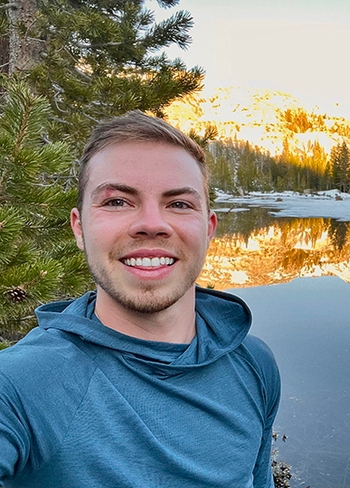
So when we viewed KQED's Deep Look video, “This Fly Torpedoes a Bindweed Bee's Nest,” on YouTube at https://youtu.be/gJHCoP4WqMc, we were totally amazed. It's nothing short of spectacular.
The crew filmed the bees in a nesting area outside the UC Davis Stebbins Cold Canyon Reserve, near Winters.
UC Davis scientists Shawn Christensen, a fifth-year doctoral candidate in the laboratory of community ecologist Rachel Vannette, UC Davis Department of Entomology and Nematology, were among those collaborating with the Deep Look production.
“Shawn has done a lot of work on this bee and with Deep Look, and he also leads our lab's work on Anthophora bomboides, a bumble bee mimic, and studies microbial associates of pollen and solitary bees,” said community ecologist and associate professor Rachel Vannette, a Chancellor's Fellow and vice chair of the Department of Entomology and Nematology.
The bees, also known as digger bees or chimney bees, are specialists on bindweed, commonly known as morning glory. “The females use pollen only from one plant species and are active through the late spring and early summer,” said Vannette, an international leader in microbial ecology who studies interactions between plants, insects and microbes.
Native to California, the bindweed turret bees dig underground nests, many with structures called turrets at the nest entrance. They provision the nests with pollen for their future offspring, and then lay their eggs inside.
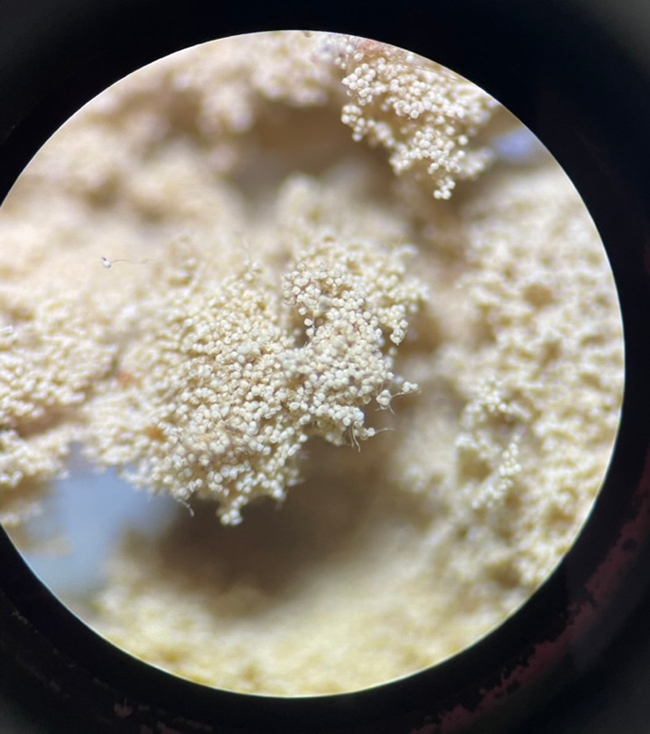
Quirós also consulted with seven other scientists: Stephen Buchmann, University of Arizona; Andy Calderwood, Ventura County Deputy Agricultural Commissioner; Neal Evenhuis, Bishop Museum of Honolulu, Hawaii; Paul Havemann, UC Davis Natural Reserve System; Keng-Lou James Hung, University of Oklahoma; Doug Yanega, UC Riverside, and James Carey, a naturalist who researches and videos bindweed turret bees in the Santa Monica Mountains National Recreational Area.
Josh Cassidy, the lead producer and cinematographer, filmed all the footage except for the male bees fighting with each other (00;17;14- 00;25;22 in the video). James Carey, who filmed that incredible footage, “has been regularly monitoring and filming bindweed turret bees since 2016 in Rancho Sierra Vista/Satwiwa, an open space in the Santa Monica Mountains,” Quirós said. “James also filmed the shot at 04;17-04;21 showing nests in the Santa Monica Mountains covered up at the end of the nesting season."
Christensen, a member of the UC Davis Microbiology Graduate Group and anticipating his doctorate in the spring of 2024, is an evolutionary biologist turned microbiologist. Christensen also researches other native bees, including Melissodes and Colletes.
Vannette focuses her research on the chemical and microbial ecology of plant-pollinator interactions and how microbes influence plant defense and resistance against insect pests. On its website, the Vannette lab is described as "a team of entomologists, microbiologists, chemical ecologists, and community ecologists trying to understand how microbial communities affect plants and insects--sometimes other organisms, too. We often study microbial communities in flowers, on insects or in soil. We rely on natural history observations, and use techniques from chemical ecology, microbial ecology and community ecology. In some cases, we study applied problems with an immediate application including pathogen control or how to support pollinators.”
We're looking forward to more research from the Vannette lab, including their work on Anthophora bomboides, a bumble bee mimic that forms turrets in sand dunes (including the sand cliffs at Bodega Head).
Most people are unaware that there are more than 20,000 known bee species in the world, and 4,000 of them are native to the United States. Of the 20,000 known bee species, 70 percent are ground-nesting bees. California alone is home to more than 1600 species.
And just one of those species is the bindweed turret bee, Diadasia bituberculata, that forages on morning glories. Glory bee...
Attached Images:
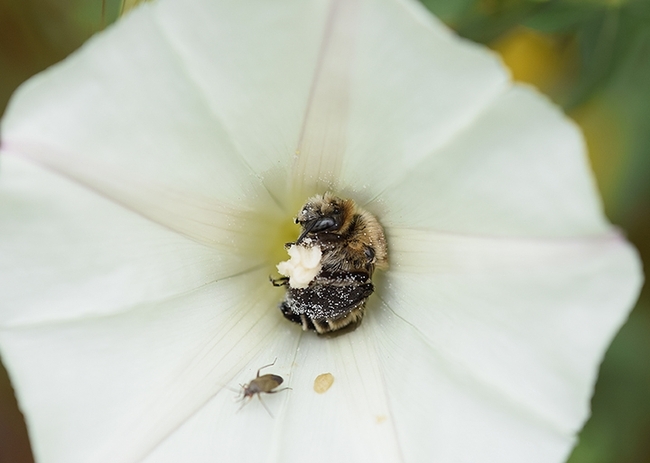
A bindweed turret bee, Diadasia bituberculata, foraging for pollen on bindweed, aka morning glory. (Photo by Rachel Vannette)
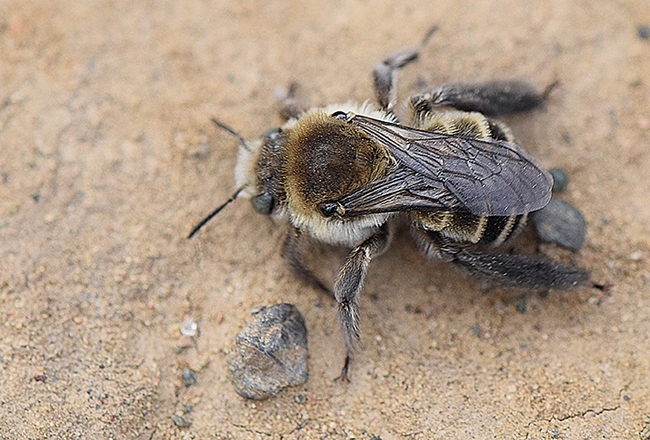
A close-up of a bindweed turret bee, Diadasia bituberculata (Photo by Rachel Vannette)
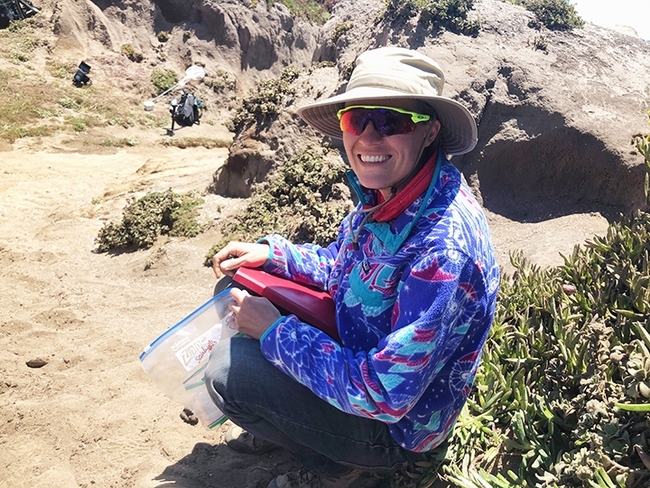
UC Davis community ecologist Rachel Vannette at work. She is an associate professor, Chancellor's Fellow and vice chair of the UC Davis Department of Entomology and Nematology.
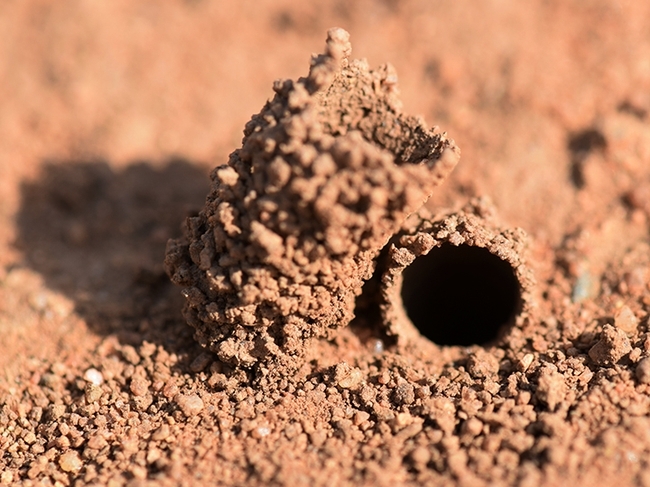
A close-up of a turret formed by a bindweed turret bee. (Photo by Rachel Vannette)